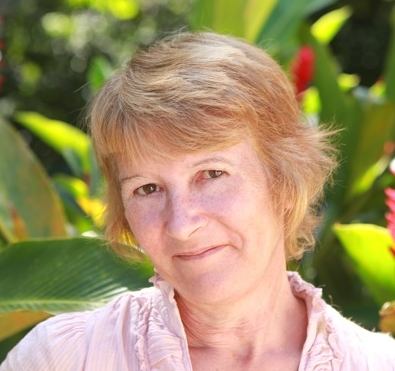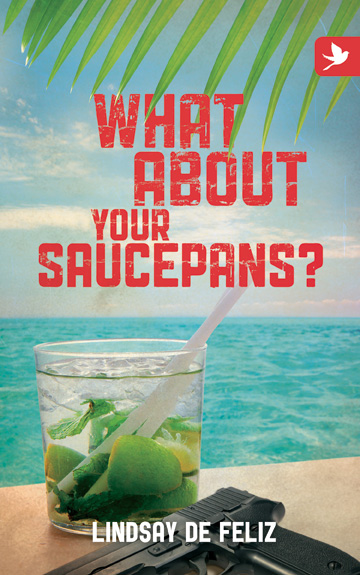
Biography
Originally from the UK, where she worked as a marketing director, Lindsay decided to follow her dreams to travel the world as a scuba diving instructor, leading her eventually to the Dominican Republic. She has lived in the DR since 2001, learning Spanish from scratch, working as a writer, translator and marketing consultant, and currently “lives in the middle of nowhere” with her Dominican husband, family, three dogs and seven cats.
One of an estimated 1,500 “Brits” living permanently in the DR, Lindsay started her blog, which chronicles daily life in the country, in 2011.
What was your knowledge of the Caribbean before you moved to the DR?
I was travelling to the Caribbean for years before I came to the DR. It was my favourite place in the world. I used to come a few times every year and have visited and stayed in Barbados, Antigua, Nevis, Grenada, St Lucia, St. Vincent and the Grenadines, Bequia, Mustique, Tobago, Saba, St Martin and the Turks and Caicos islands. I had never been to the Dominican Republic before I came here to work in 2001.
Your blog covers numerous examples of the quirks and charms of DR life, but if you had to pick out some of the most significant moments of the last 10 years, what moments come to mind?
There are probably three moments. The first was meeting my Dominican husband as my plan was to come to the country for six months to work as a diving instructor and then move on. The plan was not to meet a Dominican man, fall in love, marry him and then stay for the rest of my life. He is an amazing man and has taught me so much about how to be truly happy, how to be optimistic and care for others.
The second moment was when I was shot during an attempted robbery on our house in 2006. I was shot at close range through the throat, the bullet passed through my lung and lodged next to my spine. The lack of medical resources meant that I had to be taken to hospital by neighbors on the back of a motorbike, and we had to go to three hospitals before we could find one who would treat me – the others saying it wasn’t worth the effort as I would die anyway. Being that close to death changes your perspective on life, but has also left me unable to dive and I don’t speak very well either.
The other significant moment was when my husband became involved in politics which exposed me to a totally different side to life in the country and resulted in a total change in our life style.
What are your favorite/least favorite Dominican dishes?
I love san cocho which is the national dish - a hearty stew made with meat, locally grown root vegetables and highly seasoned with cilantro. I also love mangu – mashed plantains, and spicy goat with rice. I don’t like chickens’ feet, pigs’ trotters or tripe.
What would you rank as your must-see places to visit for someone on vacation in the DR? Any hidden gems?
The country is enormous compared to the Caribbean islands I had visited previously, so it has mountains – the highest in the Caribbean – as well as amazing beaches. It is actually the second biggest island in the Caribbean after Cuba. My favorite place is the coast to the west of Barahona in the south west, where the mountains go into the ocean. The views are spectacular, they say it is the most stunning coastal drive in the Caribbean and it is home to the best beach in the country – Bahia de las Aguilas, which is totally unspoiled and you can only reach by boat.
The mountains are also spectacular; you can climb Pico Duarte, the highest one, but it takes a few days and I must admit I haven’t done it. Jarabacoa is in the middle of the country as well as Constanza and they both have lots of eco activities and stunning views. They are also much cooler in the summer months.
In the capital, Santo Domingo, we also have the old Colonial City dating back to the time of Christopher Columbus with the first Cathedral and lovely cobbled streets and beautiful colonial buildings.
What could the rest of the Caribbean learn from the DR?
The main difference I have noticed here from the rest of the Caribbean is the friendliness of the people and how welcoming they are – no matter who you are or where you are from. The DR is a melting pot of color, religions and culture, and the Dominican people are the most friendly I have ever met. If you break down at the side of the road, within seconds someone will stop and help you. Neighbors always help each other and share food and produce.
What are the worst aspects of DR life?
The corruption is endemic, across all walks of life but especially amongst the police, judiciary and government, although there are some signs of improvement. The other main problem is the lack of electricity with over half of the country having 12 hour black outs every day. Even if you live in a supposed 24 hours circuit area, you still need a back up supply whether an inverter or a generator.
Have you noticed any changes in foreign interest in the DR during the last decade? Is it popular as a place to snap a vacation home or some land in the same way as Costa Rica had a boom? How do locals feel about this?
The country continues to attract foreign investment and more and more people are coming here to live, especially from North America due to its proximity and short flight times. There are many snow birds who come for the winter months, and the east of the country is developing rapidly not only with hotels but also residential apartments and homes. The locals have no issue with the foreign investment as it provides employment and opportunities, both within companies and as domestic employees. The only issue where the local population does not like foreign investment is in the area of mining, where some feel foreign companies are exploiting the land, taking away from the country what is rightly theirs. Some also have concerns about the damage to the environment caused by mining operations.
The government is constantly trying to make it easier for foreigners to invest in the country.
You started the blog in April 2011. How big has it become in the last two years?
When I started the blog it had one or two visits a day and now has over 100 on the days I don’t post and over 300 on the days I do. Since the beginning it has had over 30,000 new visitors and nearly 200,000 page views. Most of the visitors come from the USA, Canada and the DR, although there are visitors from all over the world. The parts of the blog most visited are those about Dominican men and relationships with them! It was awarded best blog in the DR by Expatsblog.com and is also recommended on several other expat websites.
Do you have plans for a second book? If so, what about?
My first book, What about Your Saucepans? is about my life over the last 10 years in the DR and was published by Summertime Publishing in February this year. I have a second book taking shape in my head, and whilst it will be in some ways a continuation of the first in that it will be about life in the DR, it will include more about the people I have met along the way and their stories, not simply about me.



